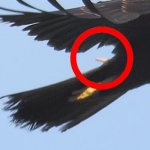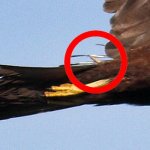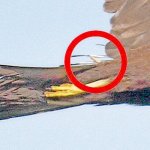Not sure where to post this one, but here is a strange object seen on a Marsh-Harrier migrating over Switzerland, see attachements.
GPS-sat antenna, or some kind or projectile ? Lines looks too regular to be some branch or wood piece, but position on the body is intriguing, not centered at all. Also the bird is not ringed, is it habitual for birds carrying GPS ?
GPS-sat antenna, or some kind or projectile ? Lines looks too regular to be some branch or wood piece, but position on the body is intriguing, not centered at all. Also the bird is not ringed, is it habitual for birds carrying GPS ?








